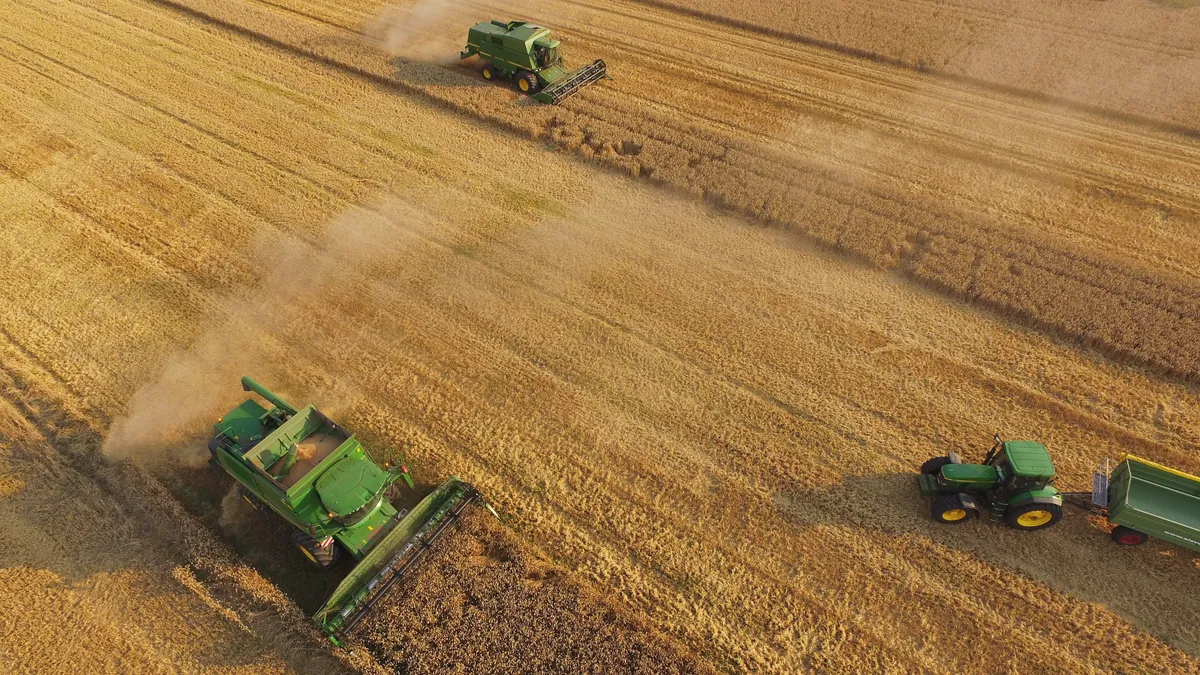Dive Brief:
- U.S. wheat exports are expected to plummet to levels not seen since the 1970s as drought conditions scorch crops and push up prices, the U.S. Department of Agriculture said earlier this month.
- Total exports are forecasted to come in at 700 million bushels, the lowest point in 52 years, according to the USDA. Exports of Hard Red Winter wheat are likely to reach the lowest level since record keeping began in the 1973-1974 period.
- Drier conditions following an unusually wet spring has limited production in the Midwest. Record production in other countries, meanwhile, have made U.S. wheat prices uncompetitive on the world market.
Dive Insight:
A rapidly intensifying drought is drying up the market for U.S. exporters, especially as other countries, such as France and Russia, report bumper harvests.
Around 52% of spring wheat areas were reported to be in drought conditions as of Aug. 15, compared to only 25% last month, according to the USDA report. For hard red winter wheat, which makes up 40% of U.S. wheat production, persistent drought resulted in both lower yields and higher abandonment this season compared to the average, reported the USDA.
The drier conditions have pushed U.S. wheat to the fourth-highest price on record, according to the USDA. Although costs have come down from records set in 2022 following Russia’s invasion of Ukraine, U.S. export prices were still higher compared to other key exporters.
Russia is benefiting from a second consecutive year of above-average wheat harvests, while France is set to recover from dry conditions that had pressured crops. Ukraine is also set to see increased production, though the country’s ability to export crops has been called into question following the end of the Black Sea Grain Initiative in mid-July.
Drought also has shrunk harvests in Canada, and lost supply in North America is expected to push overall global trade lower, according to the USDA.
In the breadbasket state of Kansas, where production is expected to be the lowest since 1966, late summer rains helped somewhat but also created new complications. Wet conditions prolonged the harvest period and encouraged growth of weeds, according to the Kansas Wheat Commission and Kansas Association of Wheat Growers.
“Every year is a little bit different, but 2023 is probably going to be one of those years that does stand out for a long time on charts, and not just due to the overall challenges this crop faced,” Kansas Wheat CEO Justin Gilpin said on an industry podcast earlier this month. “Combined with the market volatility and unprecedented geopolitical events — everything that is occurring simultaneously within the wheat market right now is pretty incredible.”











